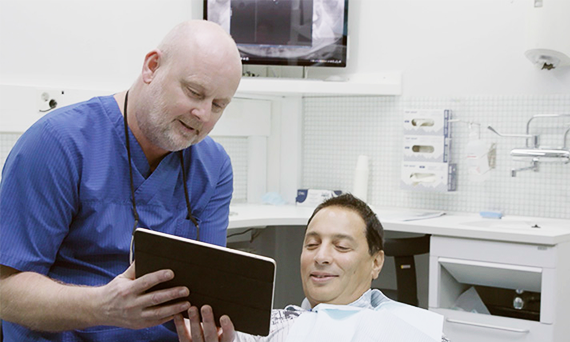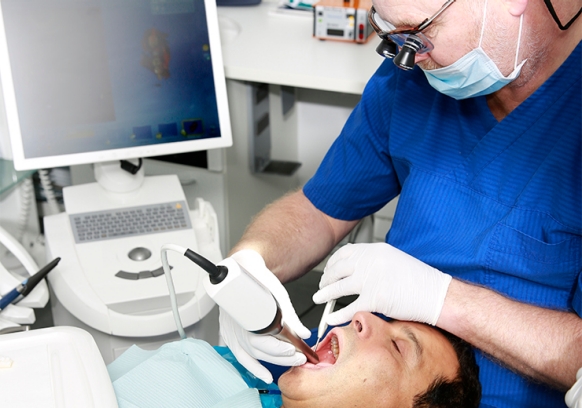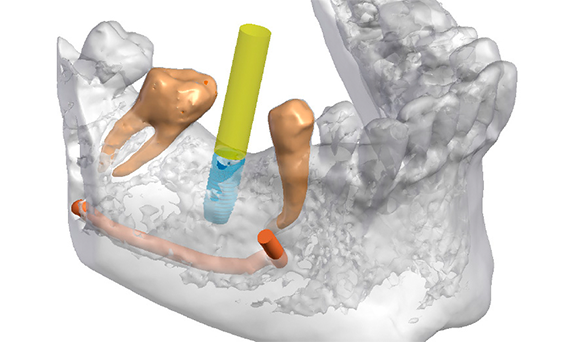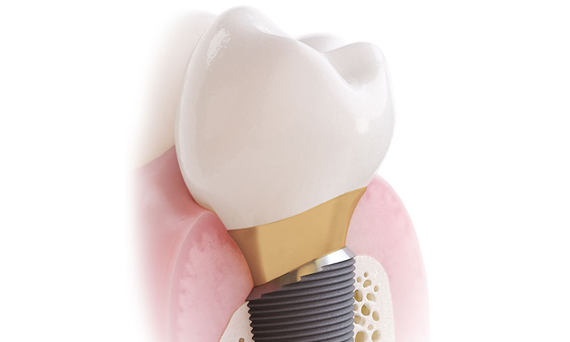Introduction
The clinician
Dr. Almgren has worked with patients requiring dental implants for more than 20 years. He fits up to 200 implants each year and handles all the prosthetic elements. In 90% of the cases, the suprastructures are screwretained. Cement-retained suprastructures are only used if the aspects are particularly important, as in the upper front.
Dr. Almgren has chosen the digital implant workflow from Dentsply Sirona Implants because it gives him optimal solutions for all his single-tooth restorations. He also feels secure and backed up by the unique lifetime warranty that Dentsply Sirona Implants offers.
The patient
Sia is a passionate dancer originally from Iran. He was excited when he discovered the tango on his first trip to Argentina more than 15 years ago. Since then, his enthusiasm for dancing has persisted and his widespread travels have taken him to festivals all over the world and today he lives in Sweden.
Sia was uncomfortable with the two gaps in his mouth and also had problems chewing. For a long time, he had tried to figure out what to do about it. It was when he met a dancer who told him about implant dentistry, she recommended Dr. Almgren, and Sia decided to make an appointment.
The right direction
Dr. Almgren is very enthusiastic when he talks about working digitally. Achieving the same results in the old-fashioned way would be difficult. To explain how a digital workflow functions, he refers to one of his most recent patients, Sia, a man in his mid-fifties who needed two single implants, on tooth position 25 and 46.
"Modern digital techniques are the obvious choice for me, as both function and esthetics are optimized. There are also advantages for the patient, such as less chair time."
The first appointment
Dr. Almgren talks about the meeting with Sia; a very decisive person normally, but slightly indecisive when it came to implant treatment. Sia was diagnosed and as the first step in the Digital Implant Workflow, a CBCT scan was made.
“The highly accurate 3D image tells me about the anatomy of the patient and where the implant will be placed. And apart from information about anatomical structures, I also receive information about the bone quality,” says Dr. Almgren.
Data capturing
An intraoral scan is required to obtain information about the patient’s dentition and soft tissue. This provides information about the position of the implant based on the desired esthetic outcome and is a key part of implant planning. During Sia’s first visit to Dr. Almgren, things changed quickly. Sia was a little skeptical initially, but Dr. Almgren really made all the difference.
"I use a digital scan which provides soft tissue data, serving as a basis for the prosthetic proposal. This is the premise for the prosthetic implant planning, and it assure maximal clinical safety and an optimal esthetic outcome."
„We connected straight away and his warm personality along with his broad experience in the field convinced me that this was the right choice of treatment.“
Planning and performing the procedure
Digital treatment planning
Dr. Almgren uses mySimplant Planning Service to plan the procedure. This involves sending X-ray files to Dentsply Sirona, who then send him a technical planning schedule based on the CBCT and the intraoral scan. In this way, he can be sure the implants are placed correctly and that the distance to the adjacent roots and bone walls is taken into account. If he accepts the surgical plan, he orders the surgical guide.
“The point of using the guide is that the implant can be placed more precisely, making the whole procedure safer.”
Choosing implants
In Sia´s case there is a sloping anatomy. Choosing the right implant with the right design is a challenge. Resorption is often pronounced on the buccal side, resulting in a sloped, lingual-to-buccal ridge.
Since Dentsply Sirona introduced the OsseoSpeed Profile EV, with its sloping implant neck that follows the bone, this is an excellent implant option in cases such as this.
"I find the OsseoSpeed Profile EV suitable in many clinical situations due to its design."
Guided surgery
On the day of surgery, Sia was a little nervous but when the nurse gave him a tranquilizer his anxiety simply fell away and he got through the whole operation without any difficulty.
As Dr. Almgren works with mySimplant Planning Service, he can apply what is termed soft tissue management and place the implant correctly without damaging the surrounding soft tissue.
The need for suturing is eliminated, resulting in optimal healing and a good esthetic appearance. After the two implants are placed according to the surgical guide, there is a healing period of at least three months.
„I rested that afternoon and felt fine the day after. And I had no pain or discomfort!“
Excellent prosthetic performance
Digital impression
Three months later, Sia returns. No problems have occurred during this time and the healing is excellent. Dr. Almgren takes a digital impression on implant level and sends the files to the dental laboratory.
“The result depends on the quality of the impression, and we know how easy it can be to jeopardize a conventional impression. Now I always get a predictable and precise result.”
Patient-specific restorations
In Sia’s case, as in many other cases, Dr. Almgren uses the Atlantis CustomBase Solution – the ultimate patient-specific, single-tooth, screw-retained restoration allowing for angulated screw access.
When Sia’s treatment is finalized he is slightly excited. ‘’Now I can smile without feeling any discomfort’’. Sia is convinced that he has made the right decision by getting implants.
“It couldn’t be easier,” he says with a smile. “So far, I have been very happy working with the Atlantis CustomBase Solution.”
Videoclip of another case showing the restorative procedures on an OsseoSpeed EV implant, position tooth 16:
- removal of the healing abutment
- installation of the Atlantis IO FLO
- intraoral scanning using the CEREC Omnicam
- installation of the Atlantis CustomBase solution for single tooth screw-retained restorations.
Why digital dentistry?
Sia underwent careful treatment without spending too much time in the chair, and the outcome was excellent.
Apart from satisfied patients, the goal for the clinician and dental technician is to achieve predictable and optimized results.
“Working with digital techniques and a digital implant workflow makes my day-to-day clinical work safer and more efficient,” Dr. Almgren concludes.
What does the patient think?
In this video, Sia gives his version of the experience of a digital implant workfow from the patient's perspective.
"It feels like it was sci-fi, but it worked. The treatment has definitely had a positive impact on my life. No one can see that I have dental implants as my two crowns look like natural teeth."
„If I had known how smooth the whole process would be, I would have gone ahead with the implants a long time ago.“
Submit your contact details and we will get in touch with you.








